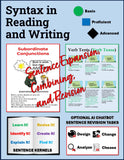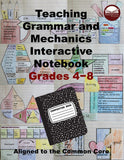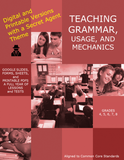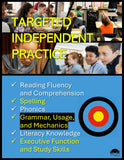Grammar, Usage, and Mechanics High School Lessons, Remedial Worksheets, and Tests
Teaching Grammar, Usage, and Mechanics High School is a full-year digital and printable program with plenty of remedial practice to help your students catch up while they keep up with grade-level standards. The resources feature 64, twice-per-week, 30-minute, no prep grammar, usage, and mechanics lessons in print or interactive Google slides (with a problem-solving secret agent theme).
Lessons are set up as Cornell Notes and provide mentor text and response activities, simple sentence diagrams, guided practice, graphic organizers, and sentence dictations.
Biweekly tests in Google self-correcting Google forms or print and a final exam.
Plus, remedial worksheets (each with a formative assessment) target skill deficits determined by the diagnostic assessment in self-correcting Google forms or print.
All program components are digital downloads (no print books).
Click the Quick Video Preview or View the Entire Print Program
We Also Recommend





